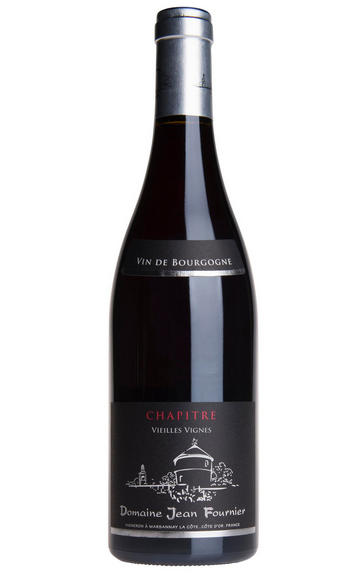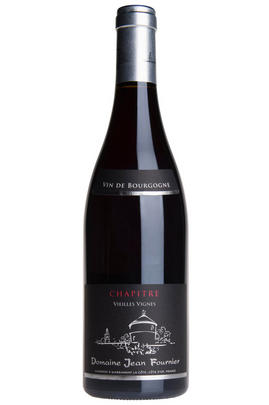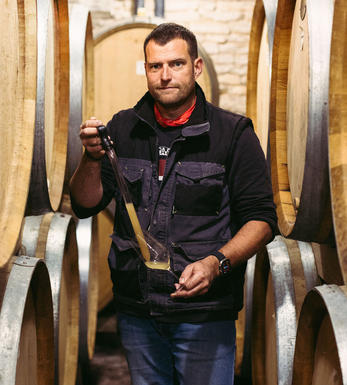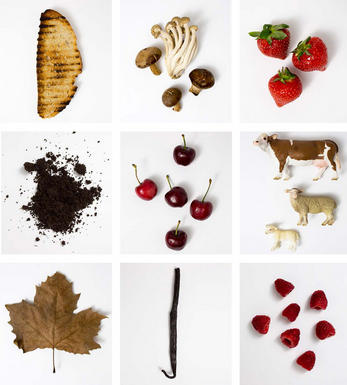
2016 Bourgogne Rouge, Le Chapitre, Vieilles Vignes, Domaine Jean Fournier

Critics reviews
Neal Martin - 29/12/2017
About this WINE

Domaine Jean Fournier
Laurent Fournier has achieved a lot since taking charge of the domaine established by his father, Jean, in the 1960s. In 2011, he was voted the Cotes de Nuits’ young vigneron of the year. He has since dedicated much of his considerable energy campaigning to establish Premiers Crus in Marsannay. Although he has begun leasing parcels in the Côte de Beaune, Gevrey-Chambertin and Clos de Vougeot, Laurent’s heart remains in Marsannay. All of the vineyards are farmed organically, with certification.
For Laurent, the 2022 season wasn’t too complicated. He explained that the grapes perhaps ripened more through concentration than by traditional means because there was insufficient water. However, the vines did not appear to be struggling, with no loss of leaves or obvious signs of stress, as had been the case in 2019 and 2020. Laurent doesn’t subscribe to the theory that the vines are adapting, though he does find the wines surprisingly fresh, perhaps because more fertiliser is being used after several years when everyone ceased to do so. For him, 2022 is a vintage with excellent clarity of terroir expression.

Bourgogne Blanc
Bourgogne Blanc is the appellation used to refer to generic white wines from Burgundy, a wide term which allows 384 separate villages to produce a white wine with the label ‘Bourgogne.’ As a result of this variety, Bourgogne Blanc is very hard to characterise with a single notable style, however the wines are usually dominated by the presence of Chardonnay, which is just about the only common factor between them. That being said, Chardonnay itself varies based on the environmental factors, so every bottle of Bourgogne Blanc will vary in some way from the next! Pinot Blanc and Pinot Gris are also permitted for use in Bourgogne Blanc under the regulations of the appellation.
As Bourgogne Blanc is very much an entry-level white wine for most regions in Burgundy, prices are usually very reasonable, and due to the terroir and climate of Burgundy, Bourgogne Blanc wines tend to have a strong acidity to them, combined with a vibrant and often fruity palate when compared with other whites from the New World, say, allowing fantastic matchmaking with many different kinds of food.

Pinot Noir
Pinot Noir is probably the most frustrating, and at times infuriating, wine grape in the world. However when it is successful, it can produce some of the most sublime wines known to man. This thin-skinned grape which grows in small, tight bunches performs well on well-drained, deepish limestone based subsoils as are found on Burgundy's Côte d'Or.
Pinot Noir is more susceptible than other varieties to over cropping - concentration and varietal character disappear rapidly if yields are excessive and yields as little as 25hl/ha are the norm for some climats of the Côte d`Or.
Because of the thinness of the skins, Pinot Noir wines are lighter in colour, body and tannins. However the best wines have grip, complexity and an intensity of fruit seldom found in wine from other grapes. Young Pinot Noir can smell almost sweet, redolent with freshly crushed raspberries, cherries and redcurrants. When mature, the best wines develop a sensuous, silky mouth feel with the fruit flavours deepening and gamey "sous-bois" nuances emerging.
The best examples are still found in Burgundy, although Pinot Noir`s key role in Champagne should not be forgotten. It is grown throughout the world with notable success in the Carneros and Russian River Valley districts of California, and the Martinborough and Central Otago regions of New Zealand.


Buying options
Add to wishlist
Description
An extraordinary Bourgogne Rouge, this is made only from vines planted in 1947 on oolitic limestone, just outside Marsannay. There are some intriguing smoky notes, with echoes of coffee and caramel. In many ways, it is the even more hirsute cousin of the Clos du Roy. A unique and fascinating wine. Drink 2019-2025.
Adam Bruntlett, Wine Buyer
The Fourniers have been making wine in Marsannay since at least the 17th century, though the domaine as currently constituted was established in the 1960s by Jean Fournier. His son Laurent now runs the estate, along with being in charge of the project to establish Premiers Crus in Marsannay. The domaine is now certified organic, through AB and Ecocert. They make more than 20 different cuvées, the majority from Marsannay. Laurent’s efforts for the creation of a Premier Cru category in Marsannay seem to have stalled for the moment – perhaps a good thing, as he needed all his energy to combat the mildew this year. Laurent is another vigneron who had to compromise his organic status to save the crop, and he ended up with 28hl/ha across the domaine. The results are compelling though: these are wines without compromise, amplifying the paradoxes of Marsannay, with its cool limestone, extreme terroirs and burly tannins. Running between those is the fruit of some wonderful old vineyards, of which Laurent is the proud custodian.
wine at a glance
Delivery and quality guarantee